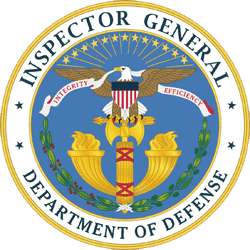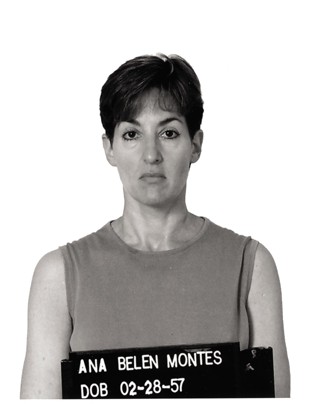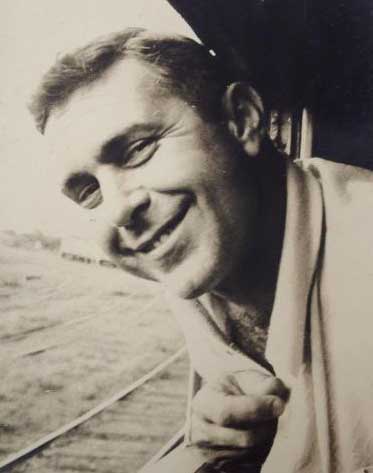 On Friday, 21 September 2001, the Defense Intelligence Agency’s senior analyst for Cuban affairs, 16-year veteran Ana Belen Montes, was arrested and charged with conspiracy to commit espionage for Cuba. News that Montes had beaten the polygraph while spying for Cuba was first reported here on AntiPolygraph.org by one of our forum members. That Montes beat the polygraph is confirmed by retired DIA counterintelligence investigator Scott W. Carmichael, who writes “She had successfully completed DIA’s counterintelligence scope polygraph examination in March 1994, seemingly with flying colors.” ((Carmichael, Scott W. True Believer: Inside the Investigation and Capture of Ana Montes, Cuba’s Master Spy. Naval Institute Press, 2007 at p. 41.))
On Friday, 21 September 2001, the Defense Intelligence Agency’s senior analyst for Cuban affairs, 16-year veteran Ana Belen Montes, was arrested and charged with conspiracy to commit espionage for Cuba. News that Montes had beaten the polygraph while spying for Cuba was first reported here on AntiPolygraph.org by one of our forum members. That Montes beat the polygraph is confirmed by retired DIA counterintelligence investigator Scott W. Carmichael, who writes “She had successfully completed DIA’s counterintelligence scope polygraph examination in March 1994, seemingly with flying colors.” ((Carmichael, Scott W. True Believer: Inside the Investigation and Capture of Ana Montes, Cuba’s Master Spy. Naval Institute Press, 2007 at p. 41.))
More recently, it has been revealed that Montes and a friend, Marta Rita Velázquez, received training in polygraph countermeasures in Cuba before Montes started working for the DIA in 1985. Montes is currently serving a 25-year prison sentence.
The Department of Defense’s Office of the Inspector General conducted a review of the Montes case and on 16 June 2005 produced a top secret report titled, “Review of the Actions Taken to Deter, Detect and Investigate the Espionage Activities of Ana Belen Montes.” An unclassified version of the report (15 MB PDF) with major redactions has been publicly released.
The DoD IG reviewed over 250,000 pages of documentation ((See p. 2 of the report, p. 14 of the PDF file.)) but evidently failed to review the National Academy of Science’s (NAS) 2003 landmark report, The Polygraph and Lie Detection, which concluded, among other things, that “[polygraph testing’s] accuracy in distinguishing actual or potential security violators from innocent test takers is insufficient to justify reliance on its use in employee security screening in federal agencies.” The NAS report is nowhere mentioned in the Montes review.

The 180-page report devotes just a single page ((p. 30, p. 42 of the PDF)) — half of which is redacted — to Montes’ having beaten the polygraph.
The Montes review makes several recommendations with respect to polygraph policy. In short, it calls for more research into polygraph countermeasures, retention of polygraph charts for 35 years, and requiring polygraph screening for everyone at DIA.
Faced with a Cuban spy who beat the polygraph, DoD consulted not the scientific literature on polygraphy, but rather turned to those with the most to hide — the federal polygraph community — and decided that more polygraphs is the answer.
Retired DIA counterintelligence officer Scott W. Carmichael notes that Montes was hardly the first Cuban spy to beat the polygraph:
Indications of a spy’s presence [within the DIA] were manifest. There was the CIA’s persistent difficulty in running Cuban agents. It seemed that every operation was doubled back against the CIA by an incredibly effective Cuban Intelligence Service as agent after agent defeated CIA polygraph examinations. ((True Believer, p. 29.))

One of the Cuban spies who beat the polygraph was the late Nicolas Sirgado, who beat a polygraph test administered by now retired CIA polygrapher Alan B. Trabue.
While the DoD IG called for more countermeasure training for polygraph examiners, DIA polygraph records leaked to AntiPolygraph.org indicate that DIA polygraphers remain unable to detect sophisticated polygraph countermeasures.
The DoD IG’s decision to ignore the science on polygraphs was presaged by a 2002 memorandum on polygraph policy by then Assistant Secretary of Defense John P. Stenbit, who completely disregarded the National Academy of Sciences’ key finding that reliance on polygraph screening is unjustified, and even dangerous to national security.
By systematically ignoring the science on polygraphs and instead increasing its reliance on the pseudoscience of polygraphy, DoD has shortchanged national security.
Below are the DoD IG’s specific recommendations regarding polygraph policy:
3 b (U//
FOUO) We recommend that the Director, Counterintelligence Field Activity ((p. 83 ff, p. 95 ff of PDF)):(i) (U//
FOUO) Research polygraph countermeasures and then collaborate with polygraph manufactures to develop, produce, and distribute new countermeasures detection devices for use by polygraph community consumers.(ii) (U//
FOUO) Develop comprehensive polygraph standards for the DoD polygraph community to increase the effectiveness of polygraph countermeasures [sic].(iii) (U//
FOUO) Establish a comprehensive polygraph countermeasures course at the DoD Polygraph Institute that requires all DoD polygraph examiners to attend the course within 1 year of graduation from initial polygraph training and thereafter requires them to attend refresher training at least biennially.(iv) (U//
FOUO) Direct all DoD polygraph programs to report to the DoD Polygraph Institute all polygraph examinations in which countermeasures are confirmed.4 (U//
FOUO) We recommend that the Deputy Under Secretary of Defense for Counterintelligence and Security continue working with Congress to change DoD polygraph provisions in 10 U.S.C. section 1564a, and, once the law is changed, to advise us of the update to DoD Directive 5210.48 and DoD Regulation 5210.48-R. ((p. 86, p. 98 of PDF.))5 (U//
FOUO) We recommend that the Director, Defense Intelligence Agency use pre-employment Counterintelligence Scope Polygraph examinations for every Defense Intelligence Agency position that requires access to Top Secret material. ((p. 88, p. 100 of PDF))6 (U//
FOUO) We recommend that the Under Secretary of Defense for Intelligence direct all DoD entities with polygraph programs to digitize and retain for a minimum of 35 years all Counterintelligence Scope Polygraph examination charts. ((p. 91, p. 103 of PDF.))7 (
C) We recommend that the Director, Defense Intelligence Agency institute a coordinated employee vetting program that uses personnel specialists, security officials, polygraph examiners, and psychologists to determine the suitability of prospective employees. ((p. 93, p. 105 of PDF.))
[…] Feature continues here: Counter-Poly Ploys […]
Like a Psychology, I think the poligraf always detect the emotional relation with the stimulation, the best way to use the poligraf is the adequate questionnaire designed for every personality.
When you make the questionnaire according the psychological profile of every candidate, you are working in the correct way to detect every failed answer.
The following statement is an indictment of the government polygraph operators, particularly Dr. Barland, who deliberately perpetrated the fraud that the polygraph was accurate and reliable as a “lie detector”: “More recently, it has been revealed that Montes and a friend, Maria Rita Velazquez, received training in polygraph countermeasures in Cuba before Montes started working for the DIA in 1985.”
Our own government was distributing information (my manual HOW TO STING THE POLYGRAPH) about these very same “countermeasures” at that same time. That is the year that I testified in Congress in support of the EPPA (EMPLOYEE POLYGRAPH PROTECTION ACT) and my manual was entered into the record as part of my testimony. What an irony it would be if the Cubans got my manual from our own representatives! That is not only possible, it is probable since the Chairman of the committee, Rep. Martinez, was from Florida and he told me he sent thousands of my manuals to his constituents there. He also told me that other members of Congress had sent them out by the hundreds of thousands. Also, my manual was presented as part of my report to the Office of Technology Assessment – an investigative branch of the Congress – when I was empanelled as an expert to study the validity of the polygraph. And Dr. Barland, an instructor with the DODPI (Department of Defense Polygraph Institute), used my manual as his textbook for his course on so-called “countermeasures”. And, two years prior to this, I taught a Justice Department attorney to use the anal sphincter contraction to produce a reaction on the polygraph chart on national television (CBS Nightwatch) – you can watch this program on the MEDIA page of my website http://www.polygraph.com.
I invented the “Sting Technique” in 1979 which teaches the use of the anal sphincter contraction, and hundreds of thousands of copies of my manual HOW TO STING THE POLYGRAPH were also distributed by unions – AFL-CIO, RETAIL CLERKS, FOP, and others – and by the ACLU, and even the JOHN BIRCH SOCIETY.
I said all that to say this – government polygraph operators knew good and well that the contraction of the anal sphincter caused a reaction on the polygraph chart that was indistinguishable from a “natural” reaction. But they insisted that they could spot anyone using this and they steadfastly refused to admit that a person could easily “beat” the polygraph test by using the “Sting Technique” because they knew that would be prima facie evidence that the polygraph was absolutely worthless as a “lie detector” and that we should never attempt to protect our national security by using an instrument that could be so easily manipulated.
How different it would have been if the polygraph operators, particularly Dr. Barland, would have told the truth and stopped using the polygraph as a “lie detector” rather than protecting their very lucrative con game by perpetrating this fraud.
I once took a polygraph for a job. Some questions I lied on the results came came back that I was telling the truth. And some questions I told the truth on came back as lies.
I would never take one again.